On a hill above the seaside town of Lyme Regis on the Dorset coast of England, an extraordinary house, once owned by an equally extraordinary woman, has just undergone a significant restoration.
The ornate pink Georgian house, named Belmont, was owned and decorated by a pioneering businesswoman of the late 18th Century called Eleanor Coade (1733 -1821). At a time when women were expected to be content with the gentler domestic arts of marriage and motherhood, Eleanor Coade became a remarkably successful business woman.
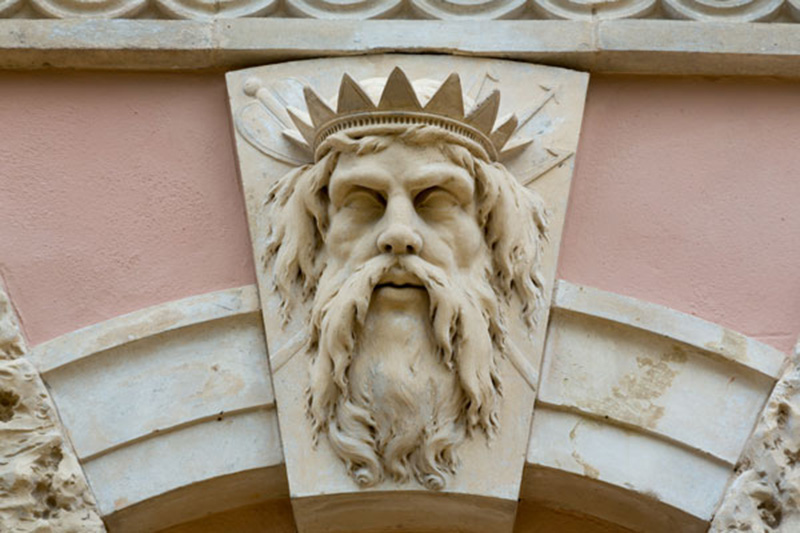
In 1769, Coade invented and marketed a stone substitute for use in architecture, which shaped the future of building at the time. The local Building Act of 1774 had banned all but the minimum use of wood in building due to fire hazard; stone, nevertheless, was still the preferred high-status building material, despite being labour intensive, expensive and heavily taxed. Enter Eleanor Coade. Coade’s artificial stone (made from ceramic material and developed and refined in her Lambeth manufactory), was extremely durable and weather resistant and could be moulded, allowing it to be used for very intricate patterns which would have been incredibly difficult to carve in stone. She would call it Coade’s Stone.
Eleanor Coade’s timing during the building boom of the late 18th Century and her sharp business acumen meant she became a wealthy woman and built Belmont (below) as her home, decorating it inside and out with her ingenious stone product.
Coade protected the secret of her stone’s success, taking its recipe the grave with her. Until recently, Coadestone remained in the Regency era until its recipe was rediscovered. Today, Coade sculpture can be found at new workshops in Wilton.
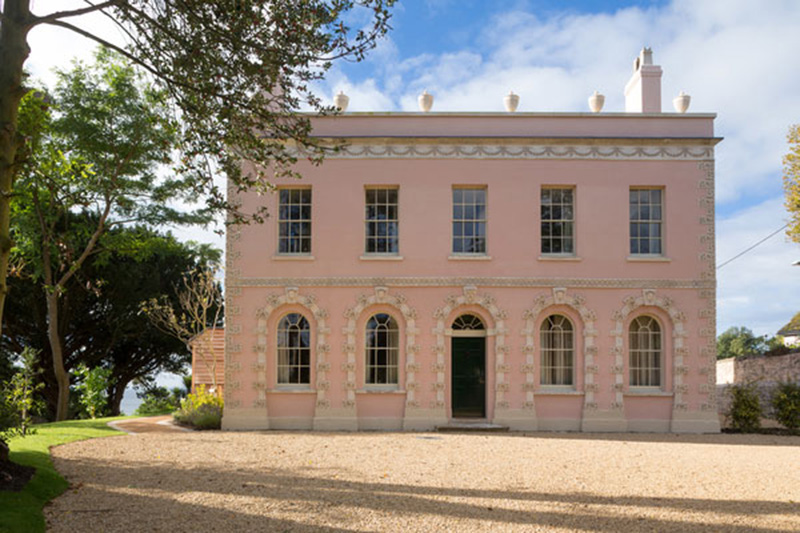
Belmont (above) has now been painstakingly and beautifully restored by The Landmark Trust, a conservation charity dedicated to saving and restoring buildings of historical significance. The wonderful and unique element of their work is that once restored, the buildings are then let as holiday accommodation. So just imagine it — you could actually stay in this beautiful pink house by the sea.
For now though, take a tour through the home of a woman ahead of her time – and not just because she loved pink exteriors . . .
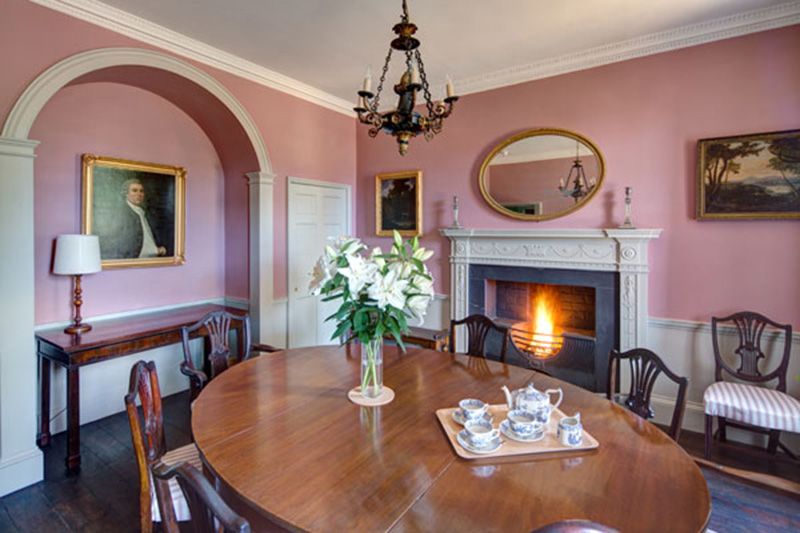
The restored dining room of Belmont (pictured above) and an inviting sunny yellow bedroom (below).
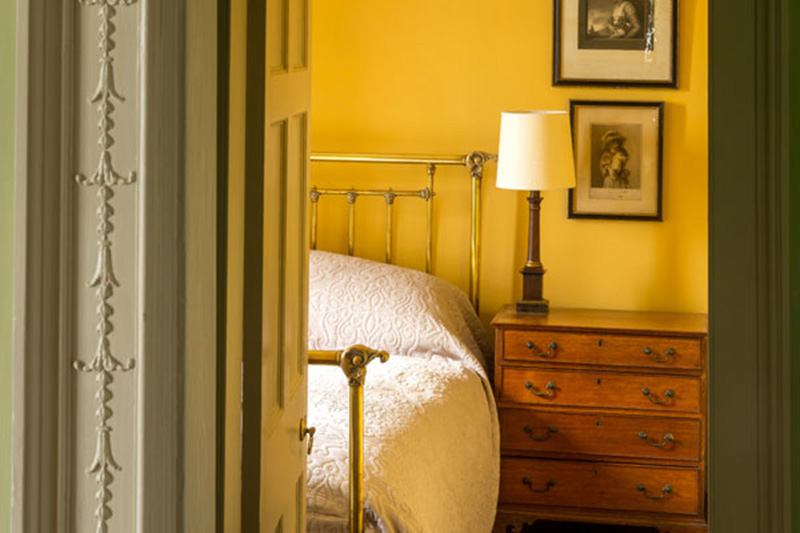
At the rear of Belmont, the restorers have retained a later edition to the building — a Victorian Observatory Tower.
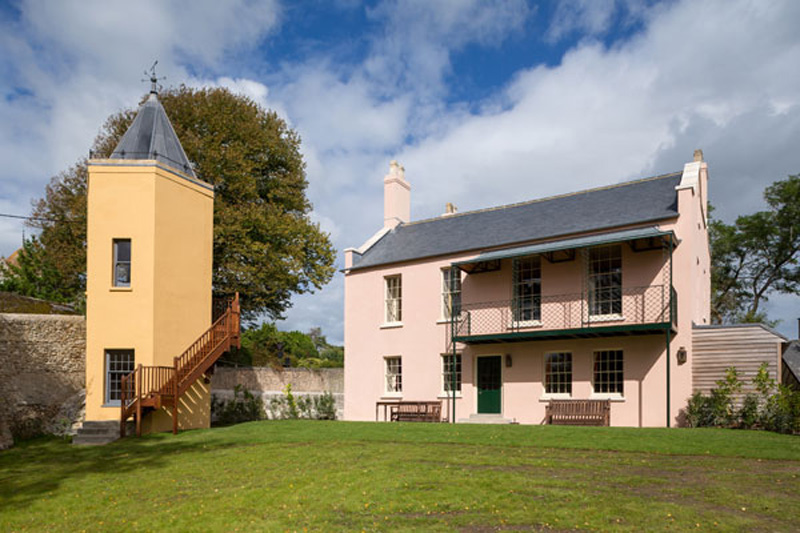
The images that follow show how Coade Stone was used on the exterior of Belmont to add detail and ornamentation. The fact that they have survived so well is testament to the quality of product that Eleanor Coade devised and marketed. All her life she protected the ‘secret’ of her stone’s success and its recipe went to the grave with her.
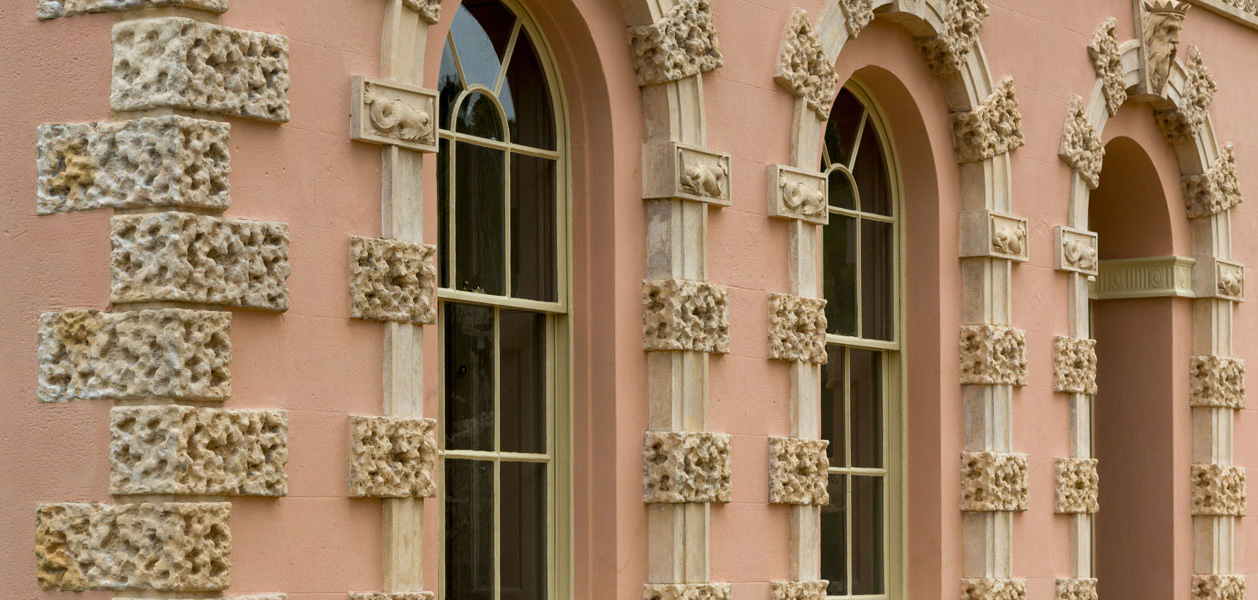
The Landmark Trust also offers many other ‘castles, forts, follies, towers and cottages’ so I thought I’d share a selection with you and maybe inspire you to plan a trip . . .
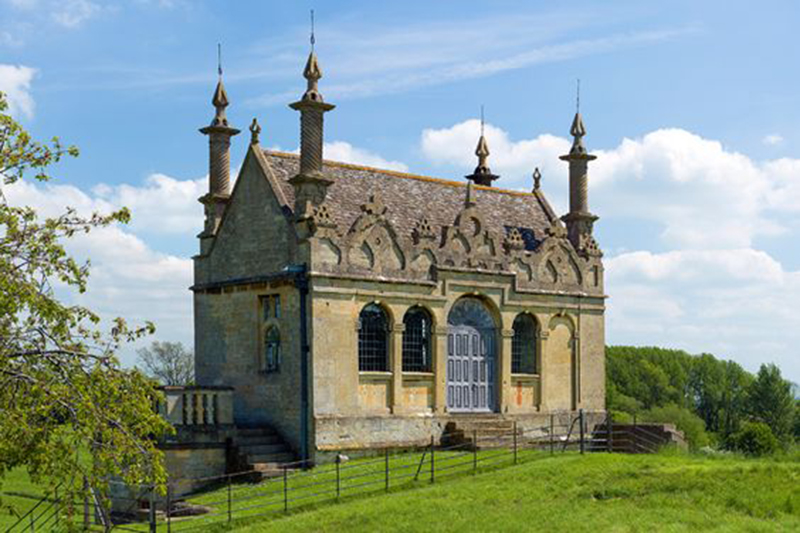
The East Banqueting House, Old Campden House, Chipping Campden, Gloucestershire
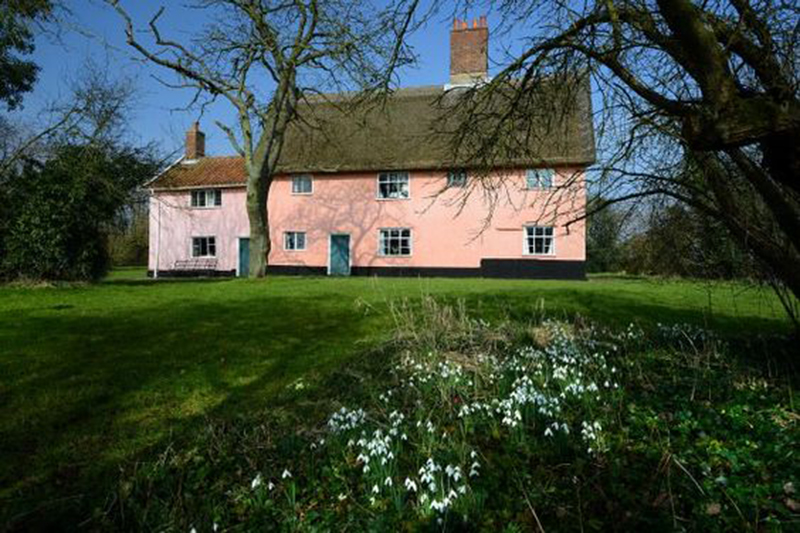
Manor Farm, Pulham Market, near Diss, Norfolk
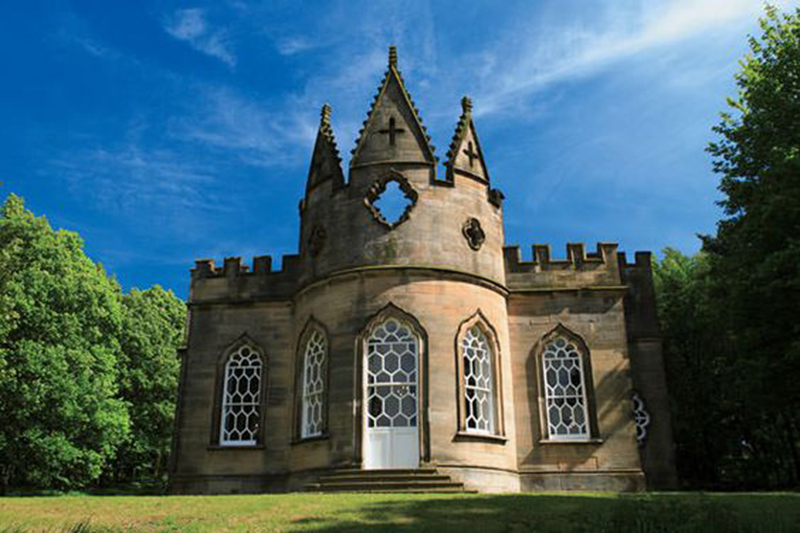
The Banqueting House, Gibside, near Newcastle upon Tyne
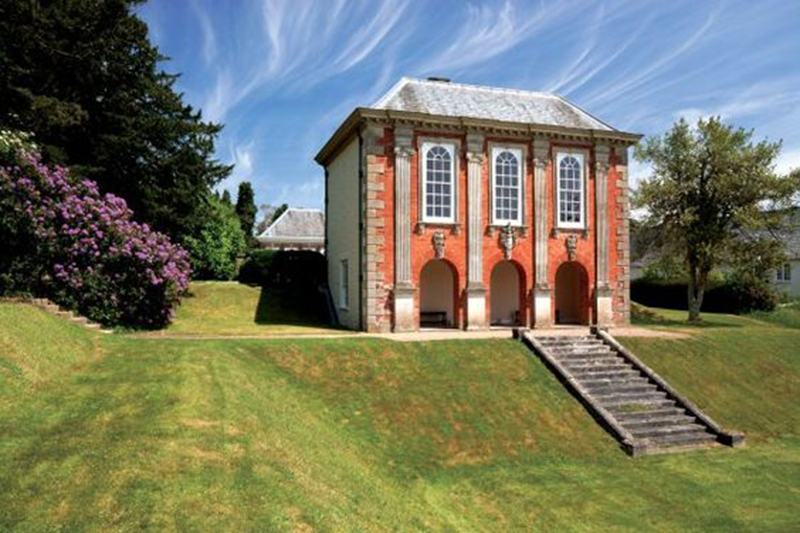
The Library, Stevenstone, near Great Torrington, Devon
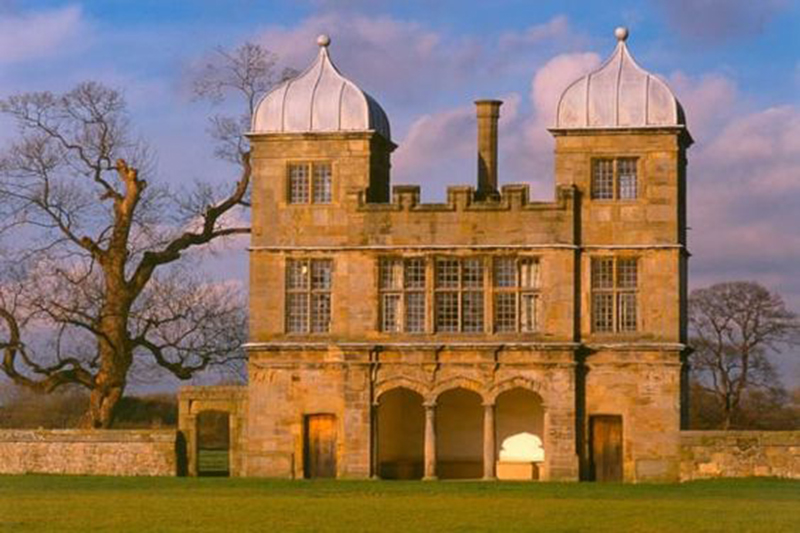
Swarkestone Pavilion, Near Ticknall, Derbyshire
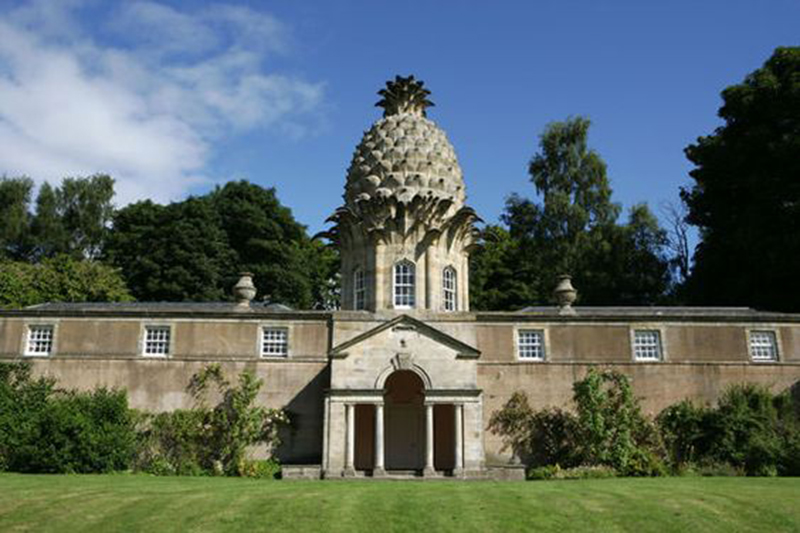
The Pineapple, Dunmore, Central Scotland
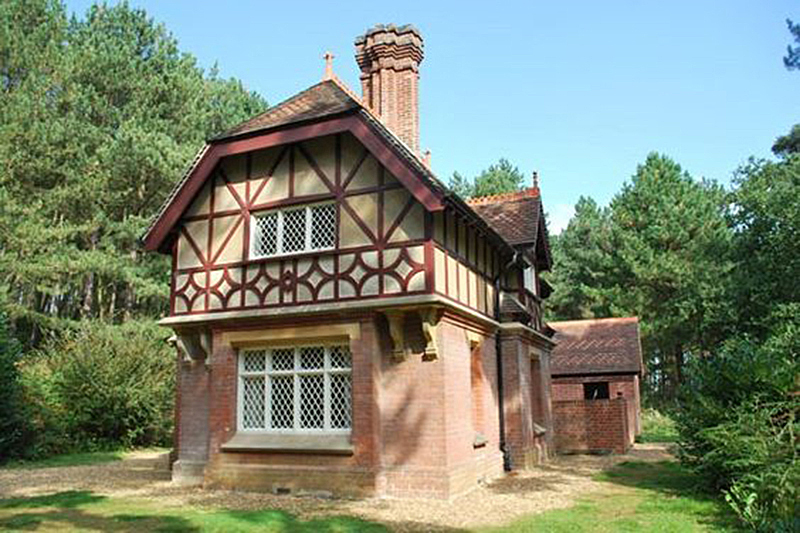
The Keeper’s Cottage, Shuttleworth, Old Warden, Bedfordshire
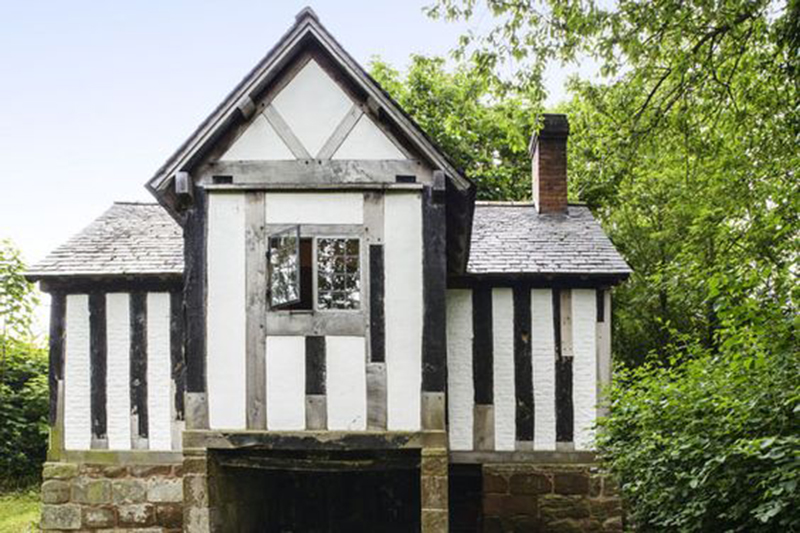
St Winifred’s Well, Woolston, near Oswestry, Shropshire

The Chateau, Gate Burton, Lincolnshire
All images from The Landmark Trust
